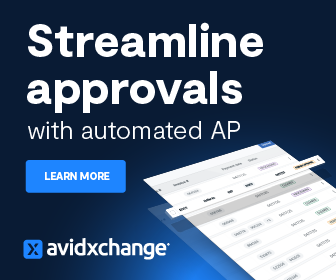For decades, annual budgets have been the cornerstone of financial planning. This type of budget, once confirmed, sets the course for the year and guides spending. However, the traditional method often falls short, especially during times of economic uncertainty.
A static annual budget can become outdated just halfway through the fiscal year, no longer reflecting reality. Rolling forecasts represent a better alternative; they are continuously updated, which means that your organization can respond quickly to changes.
For controllers, the shift to rolling forecasts is an opportunity to elevate finance’s role as a driver of agility and resilience. If your business still uses static forecasts, here’s a look at how you can lead the change.
Why Static Budgets Don’t Work
Static budgets are valuable for establishing initial targets, but they come with inherent drawbacks:
- Rigidity: Once set, adjustments are often discouraged
- Lagging Relevance: A budget created in October for the following year may be outdated by March
- “Use It or Lose It” Spending: Departments are motivated to spend unused funds at year-end to secure similar allocations in the future
These shortcomings can hinder strategic decision-making and reduce the organization’s ability to pivot.
What Are Rolling Forecasts?
Rolling forecasts extend the planning horizon by continually adding new forecast periods as the current period closes. For example, a 12-month rolling forecast always projects one year ahead. However, it’s updated each month or quarter based on the latest market insights and finance data.
This approach allows you to:
- Maintain continuous visibility into financial performance
- Adjust projections to reflect the latest data
- Keep decision-making aligned with current conditions rather than outdated assumptions
Transitioning to a rolling forecast leads to smarter cost planning and reporting. Drawing on these advantages, finance can more effectively support the organization’s big picture goals.
Benefits of Rolling Forecasts for Controllers
By making the switch to rolling forecasts, you can unlock the following benefits.
Greater Agility
A rolling forecast allows your finance team to more agilely respond to changing conditions.
Throughout the year, your organization may encounter challenges such as:
- Supply chain disruptions
- New competition
- Unexpected demand fluctuation
Static budgets make it hard to adapt until the next annual budgeting cycle. Rolling forecasts can be updated monthly, allowing the business to adjust course.
Improved Forecast Accuracy
Unreliable forecasts are the enemy of nimble decision-making. When the C-suite doesn’t trust the budget, they will be unable to act decisively.
Rolling forecasts use the most recent data, which means that projections are more precise and reflective of current trends.
Enhanced Collaboration Across Departments
Rolling forecasts require ongoing engagement from sales, operations, marketing, and other functions. Getting these teams talking about the budget throughout the year promotes cross-functional alignment and helps the business stay on track for 12 solid months.
Better Resource Allocation
With rolling forecasts, your organization can redirect resources to high-priority initiatives as conditions evolve. The result? A stronger return on investment and the ability to capitalize on fleeting opportunities.
With a static budget, you may lack the data necessary to seize these chances as they emerge throughout the year.
Transitioning From Static Budgets to Rolling Forecasts in 5 Steps
Is your business ready to ditch static budgets in exchange for rolling forecasts? Follow these five steps to make it happen.
Step 1: Define the Forecast Horizon
Determine how far ahead you want to project. Most organizations look ahead 12 to 18 months, but some extend the timeline to 24 months for longer-term visibility. Consult with the C-suite to determine which time horizon is the best fit for your organization.
Step 2: Choose the Update Frequency
Most rolling forecasts are updated monthly or quarterly. Monthly updates are best if you work in a volatile industry that is influenced by numerous seasonal or market trends. If your industry is more stable, quarterly updates may be the right choice.
Step 3: Integrate Operational Data
Rolling forecasts work best when informed by real-time data from sales, supply chain, HR, and marketing. You’ll need this data to publish updated forecasts consistently and by set deadlines. Collaborate with department leaders throughout the year to ensure information is delivered promptly.
Step 4: Automate Where Possible
Automation tools reduce the manual effort involved in updating forecasts. In turn, your finance team will have more time to focus on analysis instead of wasting countless hours on data entry.
Step 5: Train Stakeholders
Educate department leaders on the purpose and mechanics of the change to rolling forecasts. Their buy-in and participation are integral to the project’s success.
The Strategic Role of Controllers in Continuous Planning
Static budgets still have a place in setting long-term goals, but they are no longer sufficient as the sole planning tool.
Rolling forecasts offer a flexible, data-driven alternative that keeps financial strategy relevant throughout the year. As you explore this alternative, start by emphasizing the benefits rolling forecasts deliver to get key stakeholders on board.




